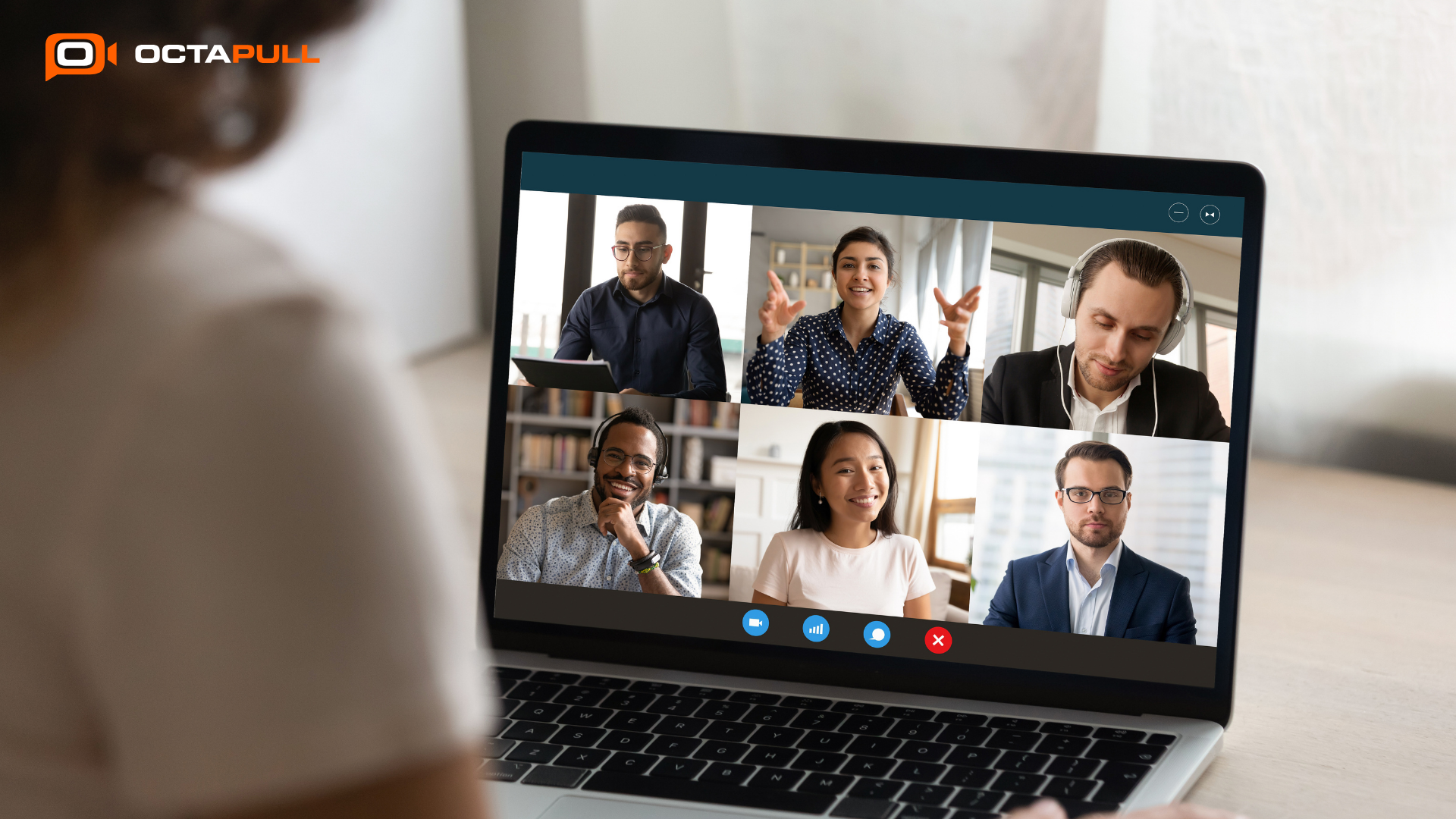With the rise of the remote working model, businesses continue their operations without physical office environments and rely on video conference tools to hold online meetings.
In this sense, taking meeting notes during meetings allows team members to record important information and discussion points. To make meetings more engaging and interactive, team members can benefit from different note-taking approaches that align with their preferences and styles.
Advanced capabilities of video meeting software such as OctaMeet offer businesses annotation, interactive whiteboarding and recording tools, and speech-to-text features, increasing the productivity and efficiency of online meetings.
What are Meeting Notes?
Meeting notes are recordings of information such as key points, action items, references, and decisions during meetings. These notes make it easier to remember the details, actions, and any other important aspects of a meeting.
Well-structured and visually appealing meeting notes can make information easier to understand, more engaging, and interactive.
There is no set format or style for meeting notes, and individuals can use their own note-taking methods they find preferable.
Although meeting notes can be written down manually in traditional manners, with the increasing prevalence of online meetings, it is more efficient to take these notes digitally using appropriate note-taking applications.
Team members can assign a dedicated note-taker for a meeting, or they can also use AI tools to create captions and notes from recordings. It is important to choose a video conferencing software such as OctaMeet, which supports screen and voice recording, along with speech-to-text capability.
Efficient Tips for Taking Meeting Notes
Choosing a Note-taking Method
There are various note-taking methods to use during meetings. These include Cornell, quadrant, mind-mapping, outline, and slide methods. Participants can choose an efficient method to their liking and preference.
Taking Notes in Digital Format
For online meetings, it is often more beneficial to take notes using suitable digital tools instead of writing them down by hand. This makes note-taking easier to organize and more efficient.
Using Ready-to-use Templates and Tools
Instead of creating a note page from scratch, it may be a better idea to use templates offered by various note-taking tools. This helps to save time and makes it easier to take down notes.
Assigning a Note-taker
It may be exhausting for team members to individually take notes and focus on the meeting topic. Therefore, they can prefer to choose a person to be the note-taker during meetings.
Screen and Note Sharing
Remote working teams often prefer to have online meetings. Using video conference tools, team members can share their screens and notes, and this can contribute to meetings becoming more interactive and encourage collaboration.
Meetings Record and Caption Creation
Notes can also be prepared after the meetings. Video conference tools and recording features allow online meetings to be recorded for easier note-taking. Creating auto-captions enables team members to read them later. Recordings also facilitate sharing meetings with those who cannot attend.
Effective Methods for Note-Taking
Cornell Method
Cornell Method calls for note-takers to create two separate columns, with a small one on the left and a large one on the right. Detailed Information is written down in the right column, while key points and takeaways are placed written on the left column.
This method makes it easier to switch from key points to details that are side by side, make notes more organized, and scan important points quickly while paying attention to information in depth.
The main steps for the Cornell Method:
- Write down the main points.
- Summarize them using keywords.
- Paraphrase and analyze the key information.
- Review notes after the meeting.
Quadrant Method
With the quadrant method, note-takers divide their notes into four sections. These sections are labeled as general notes, personal action items, action items for team members, and questions.
- General Notes: Main notes that include key points and details
- Personal Action Items: Actions that include personal goals, objectives, and deadlines
- Action Items About Others: Actions that are assigned to other team members
- Questions: Inquiries about certain points during the meeting
Mind-Mapping Method
Mind mapping uses a diagram format unlike listing methods, and allows for a graphical representation of thoughts, concepts, and ideas. Therefore, it is suitable for note-takers who are visual thinkers and cannot decide where to start.
The main point of mind mapping is that it helps note-takers to see connections between ideas and offers a general overview of key takeaways. First, a topic is written down in the center of the page and other related points are connected to it.
This way, team members can review meeting notes quickly and effectively, having an overall view of the notes.
Outline Method
The outline method allows note-takers to break down larger information into bite-sized pieces. Similar to listing methods, related ideas, and concepts are written below a central one, forming a hierarchy between them.
After writing the central point, note-takers add supporting ideas below it, with indentation to the right. If there are more supporting ideas, the same is repeated as needed.
It is easy to create and offers a well-structured method, hence no templates are needed. It is preferable during meetings, as it makes it easier to understand the material by highlighting the main point and summarizing information more quickly.
Slide Method
As a straightforward method, writing on slides involves writing directly on the meeting material such as slideshows. Participants can either use digital tools or on paper, depending on their preferences. It can also be combined with other note-taking methods.
Annotating on slides allows highlighting, underlining, and drawing allowing meetings to be more interactive. To use the slide method, team members need to have meeting slides beforehand. They can either have physical copies or use their preferred notetaking platform.
Video conferencing solutions such as OctaMeet feature annotation functionality. This enables participants to take notes on the slideshows and materials directly and share them during meetings with ease.
Make Your Meetings Interactive with OctaMeet
OCTAPULL’s new generation video conferencing solution OctaMeet allows enterprises to arrange online meetings with ease and comfort thanks to its fast and reliable infrastructure, industry-level security measures, and user-friendly interface.
Screen, Content, and Note Sharing
With OctaMeet, participants can share their screens, slideshows, meeting notes, videos, presentations, and other content. This increases interaction and collaboration, contributing to visually appealing meetings and presentations.
Additionally, recording capability eliminates the need to use external software for audio and screen recording. If team members desire to assign a dedicated note-taker, recording, and auto-caption features allow them to review meeting topics and create notes after meetings.
Interactive meeting tools such as polls, and Q&As (question and answer sessions) can be conducted to increase engagement, and these can be included in meeting notes.
This way, participants who cannot attend the meetings can be informed of meeting decisions and other members’ opinions.
Interactive Collaboration Tools
OctaMeet supports meetings through its interactive features such as whiteboard and annotations. These features allow hosts and participants to take notes directly on materials presented in meetings.
This facilitates communication by making materials easy to understand, fostering collaboration, and increasing engagement in meetings. Flexible and easy-to-use annotation features allow participants to use their preferred note-taking method during meetings.
With OctaMeet’s built-in note-taking tools, users do not have to look for external tools to write down notes. They can annotate materials and slides, highlight important sections, and add drawings.
Using a single application for meetings, note-taking, and screen recording, businesses can boost the productivity and efficiency of their online meetings.
For more information about OctaMeet’s features and licenses, you can contact us today and schedule a demo meeting.

